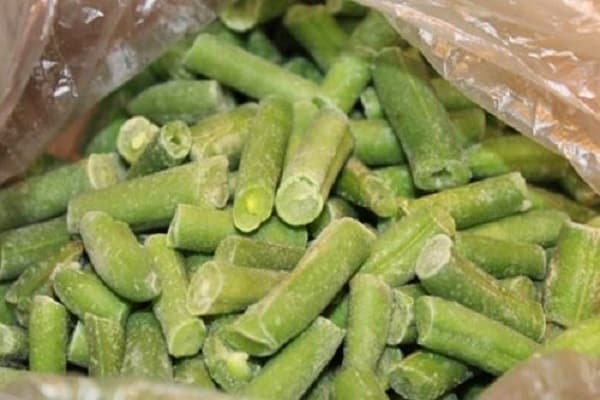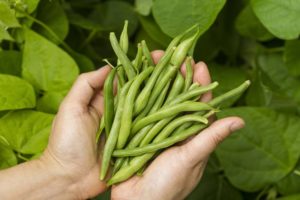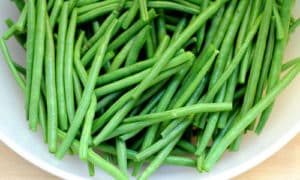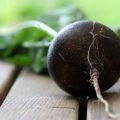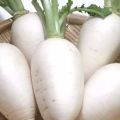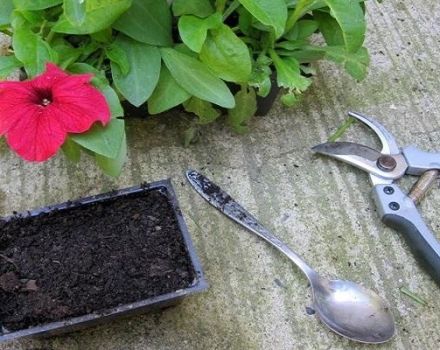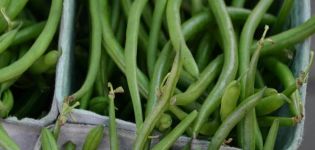What is asparagus, its types and where it grows, the benefits and harms
Now many people strive to eat healthy, one of the components of this lifestyle is the consumption of asparagus. What is asparagus? This vegetable is very useful, it is interesting that there are more than 200 species of such a plant. You can buy asparagus at any time of the year, but it has a season: they start harvesting from the first days of April. During the rest of the year, this vegetable contains fewer vitamins. In this case, it is grown on an industrial scale. Where else does asparagus grow? You can grow this vegetable in your own summer cottage, while you need to know a few points about asparagus and how to care for the planting.
Content
Description of the variety
Asparagus is a very useful product, it differs in that it is easily absorbed by the body, contains a minimum of calories, a huge amount of vitamins and minerals. It also contains coarse fibers that have a beneficial effect on digestion.
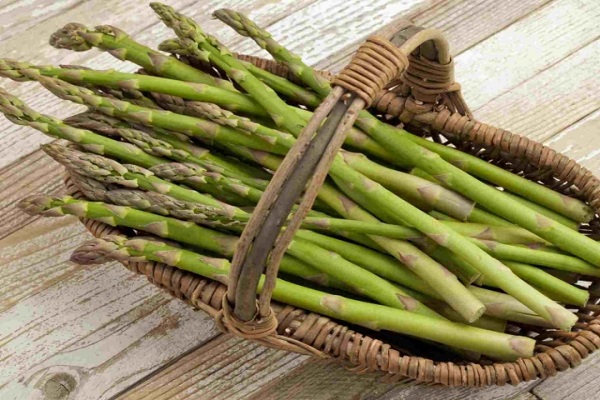
Chemical composition
Asparagus is rich in a variety of chemical elements. It contains magnesium, which has a calming effect, and potassium, which provides a diuretic effect. In addition to these elements, the vegetable contains iodine, which is necessary for the normal functioning of the body.
Also, asparagus contains nicotinic acid, which has a beneficial effect on the body in the treatment and prevention of gout, hepatitis, atherosclerosis, cirrhosis of the liver. Nicotinic acid is very beneficial for women during feeding and carrying a baby. Also, this chemical compound relieves vascular tension, pressure, helps to normalize blood circulation processes.
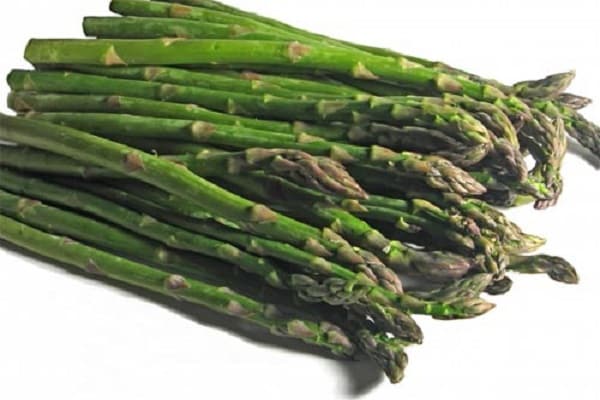
Asparagus contains a huge amount of folic acid, which has a beneficial effect on the body of a pregnant woman and on the development of the fetus. Also, this chemical compound has a positive effect on the circulatory system, prevents the development of liver pathologies.
In addition to these elements, the vegetable contains sodium, phosphorus, zinc, iron, calcium, beta-carotene. This composition determines a lot of useful qualities of asparagus.
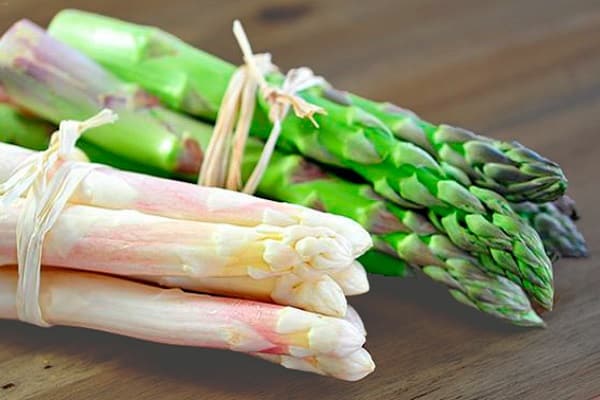
What's good about asparagus?
Asparagus is a very useful vegetable for humans, and it is recommended to use it not only for adults, but also for children. Among the main advantages of a vegetable are:
- beneficial effect on appearance: improving the structure of the skin, hair;
- calcium and phosphorus strengthen the human bone apparatus;
- asparagine dilates blood vessels, lowers blood pressure, removes ammonia from the body;
- asparagine also activates the heart, which is why asparagus is recommended to be eaten by people who have had a heart attack;
- iron and magnesium have a positive effect on the function of hematopoiesis;
- zinc strengthens connective tissues, activates the healing processes of wound surfaces;
- potassium has a diuretic effect.
The high vitamin C content helps to strengthen the immune system.
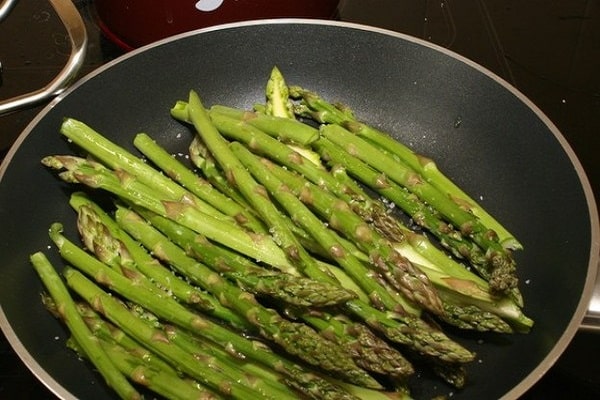
Protein content
Depending on the variety of asparagus, the amount of protein in the plant may vary slightly. On average, there are 2.2 grams of protein per 100 grams of a vegetable.
Vitamin content
Also, this vegetable contains a large amount of vitamins. Among them are: B1, B2, B9, C, A, PP. In addition to these vitamins, the vegetable contains provitamin A, which has a beneficial effect on eyesight, improves skin condition.
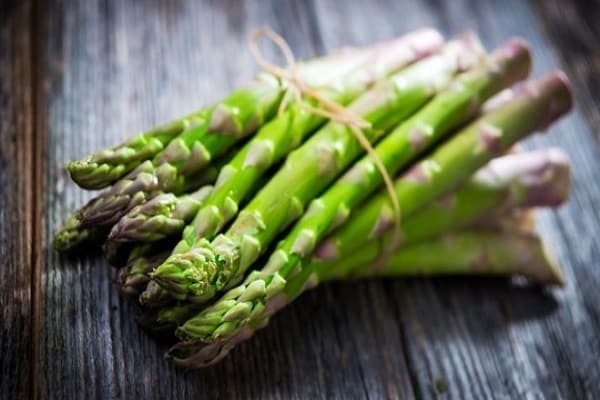
Calorie content
Asparagus is considered the optimal ingredient not only for main courses, side dishes, but also for salads. Such widespread use of the vegetable is due not only to its taste, but also to its low calorie content. Indeed, 100 grams of asparagus contains only 20 calories. Moreover, the calorie content of the dry product sold in stores remains the same.
Asparagus seeds
Asparagus seeds are widely used to grow the plant. It is worth considering that with simple sowing of dry material, the seeds germinate for a very long time, therefore it is recommended to soak them before sowing.
Besides direct sowing into the soil, the seeds can be used for growing seedlings. In this case, a developed plant can be obtained faster.

Asparagus leaves
Asparagus asparagus is characterized by elongated leaf plates with a slight sharpening and a pronounced central vein. The leaves are dark green and glossy.
The Sprenger variety is characterized by flattened leaf blades. At the same time, the leaves resemble Christmas trees.
The leaf plates of Asparagus crescent have a shape that corresponds to its name. It is slightly corrugated on the edge. The color of the leaves is bright green.
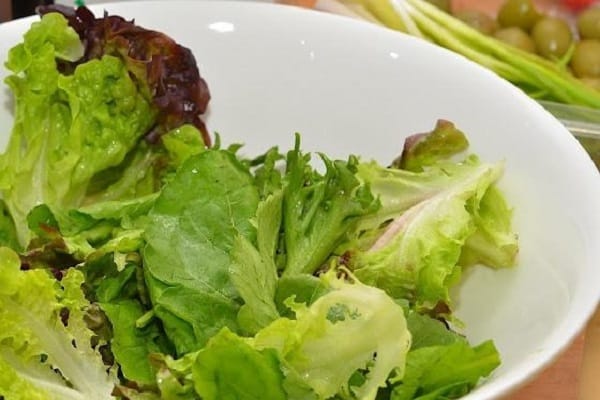
Asparagus roots and rhizome
In addition to the stems and fruits of asparagus, you can also eat its roots. The rhizomes of medicinal asparagus are mainly used to treat joints. This is due to the fact that they contain asparagine, steroid saponins, coumarins, carotenoids. Rhizomes are harvested in the autumn, when the aboveground part begins to fade.
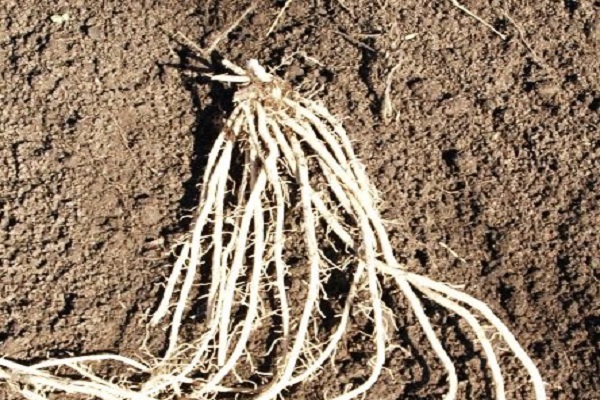
Asparagus stalks
Stems of Asparagus asparagus curly or creeping. The shoots of the Sprenger variety are long, they can reach a length of 1.5 meters, the shoots can be erect or penetrating.
The thickest and longest stems are distinguished by the cultivar Asparagus sickle. If grown in a greenhouse, the plant can grow to a height of 4 meters. If this plant grows in natural conditions, it can develop up to 15 meters.
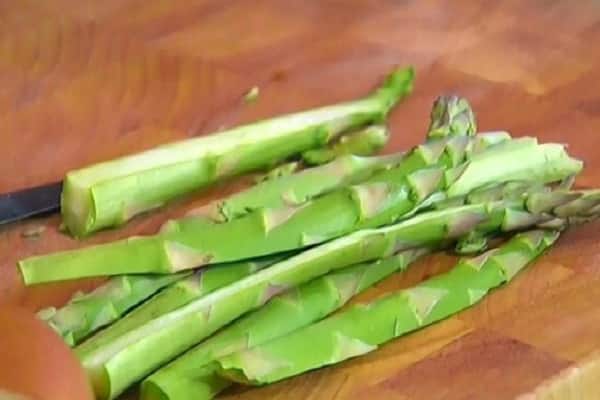
Asparagus
Asparagus asparagus berries are red in color, small in size. This plant blooms with small whitish bells.
After the flowering of the Sprenger variety, a large number of red berries are formed. In this case, the fruits have the character of drupes.
The berries of Asparagus crescent are brown. They form as soon as the plant has finished blooming with white flowers.
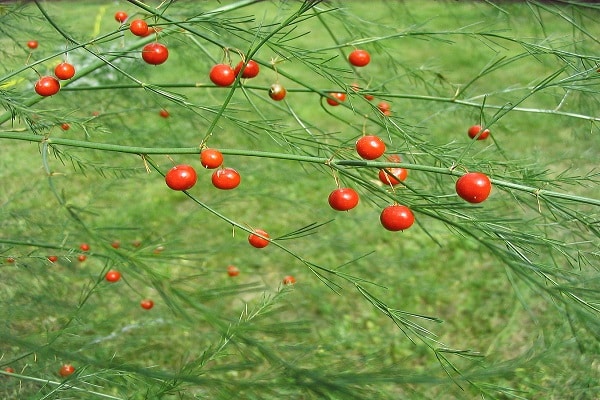
Asparagus juice
Asparagus juice is a very healthy drink that contains a large amount of lutein.This substance actively fights against atherosclerotic plaques, and the use of the drink can completely replace drug therapy.
The juice also contains the alkaloid asparagine, which lowers blood pressure, normalizes liver function, tones the vascular system, and normalizes the heart rate. In addition to these useful qualities, the product also has all the advantages of an ordinary vegetable.
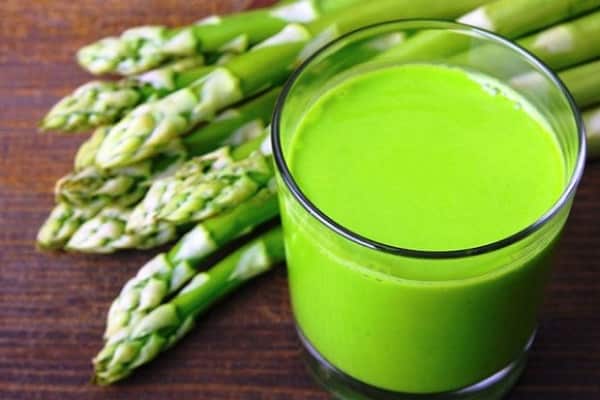
Asparagus species
There are a huge number of asparagus species. Each of them has its own features, characteristics. Some of them are grown for decorative purposes, while others are cultivated for medicinal and food purposes. In cooking, the herbal type of asparagus is used, due to the fact that they are characterized by an excellent taste.
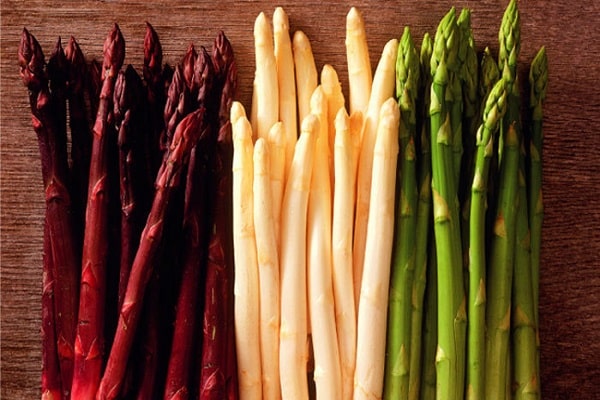
White asparagus
This type is the most delicious. Asparagus grows without light, which causes its shoots to turn white. White asparagus is rich in calcium and potassium, vitamin A, B and C.

Green
This is the most common type. In terms of its taste, it is not inferior to the white variety. This species is rich in selenium, phosphorus, potassium, vitamins A and B.
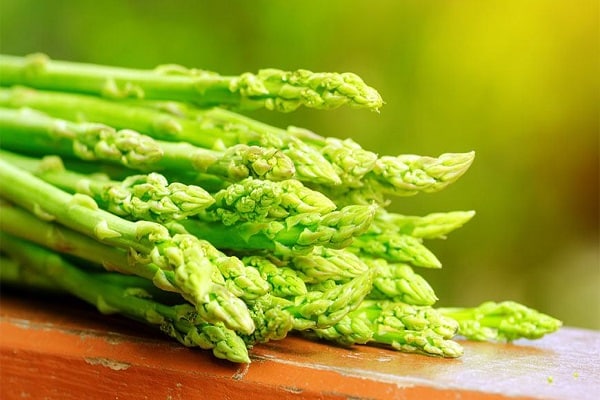
Purple
This variety is very interesting due to the fact that it grows in complete darkness. In this case, the plant is given short-term light sessions. The purple look has a slight bitterness. During heat treatment, the vegetable changes color towards greenish.
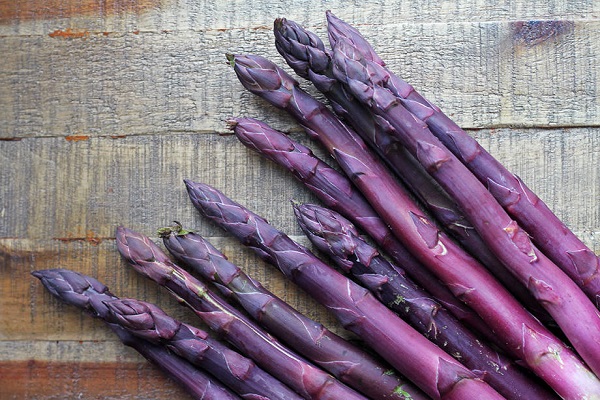
Red
Red asparagus is not a separate vegetable. It is sometimes called the purple variety.

Soy asparagus
Soy asparagus is a processed product of soybeans. It is prepared as follows:
- The bean mass is soaked.
- Then it is put under a press, separated from soy milk.
- Then the resulting mass is boiled. As a result of this process, a film is formed on the surface, which is named after soy asparagus.
This product has a positive effect on the body during the prevention of cancer, osteoporosis.
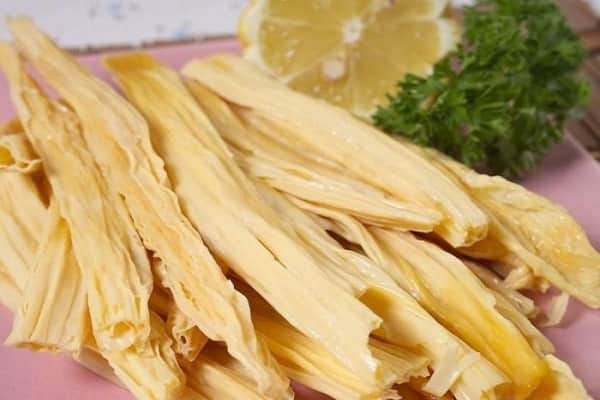
Legume
Another name for this varieties of asparagus beans... Its beans can be yellow, red. Such a product is considered an excellent component of dietary nutrition, as it contains an easily digestible protein.
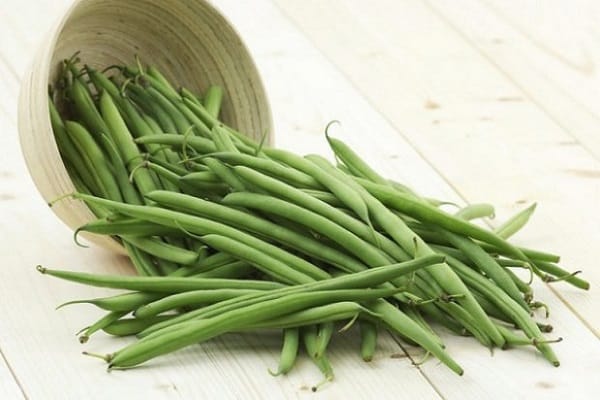
Marine
This type of asparagus grows on the sea coast, salt marshes. Sea asparagus contains potassium, magnesium, calcium, iron, sea salt. This species has a salty taste with hints of iodine.
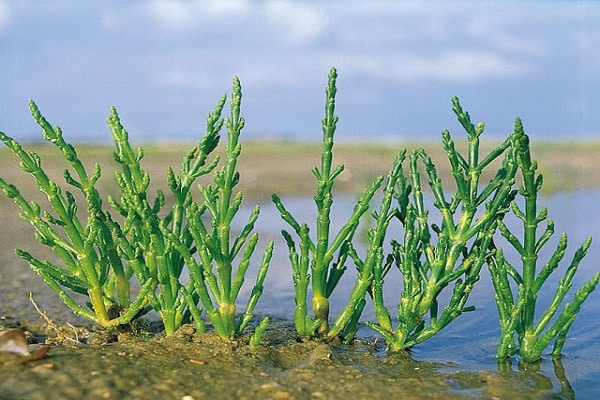
Varieties
There are several varieties of asparagus. Each of them has its own differences and characteristics.
Glory of Braunschweig
The flesh of the shoots of this variety is white, while it is juicy. Planting forms a huge number of shoots, which is why such a variety is considered highly productive. Mostly shoots are used for canning.
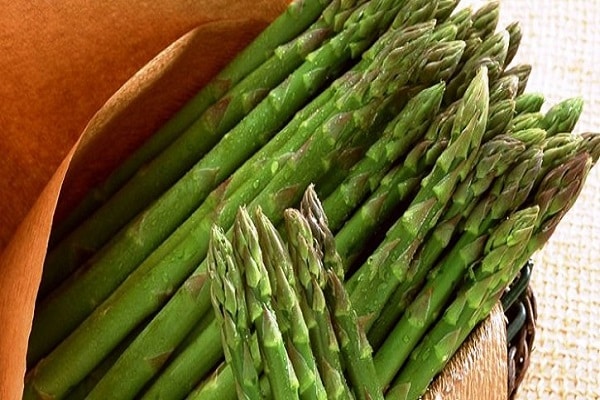
Argentel early
This variety is distinguished by large, juicy shoots that have a light shade. In light, the stems turn greenish-purple.
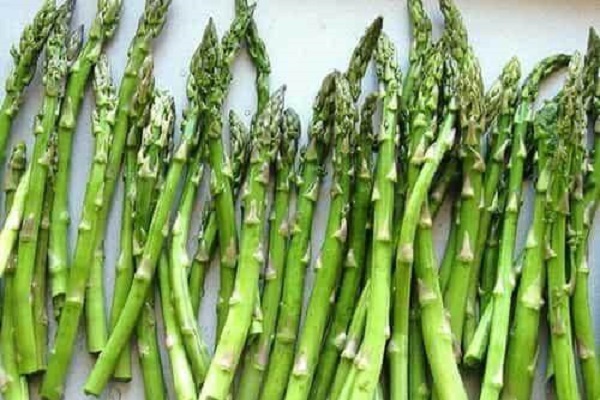
Early yellow
This variety is characterized by greenish yellow shoots. This vegetable is ideal for canning.
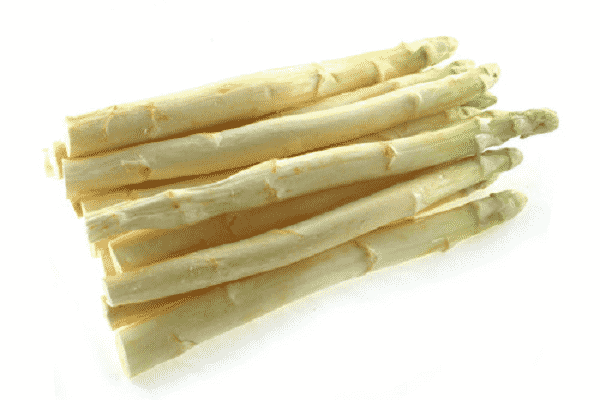
Mary Washington
This variety is distinguished by beautiful shoots with a delicate texture. The shoots taste good. The shoot head is colored red-violet.
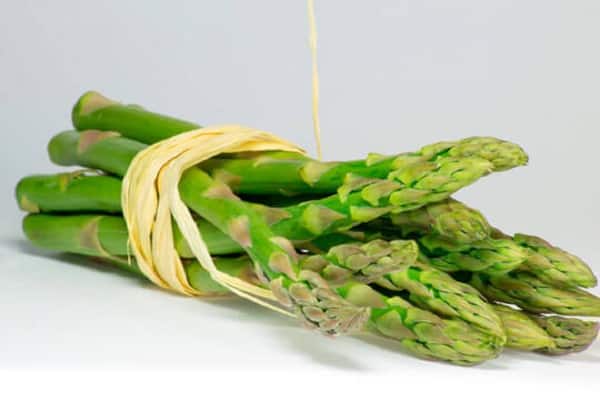
Snow head
This variety differs in that it forms sharp shoots, at the end of which there is a whitish head. The product can be consumed fresh. It is also ideal for canning.
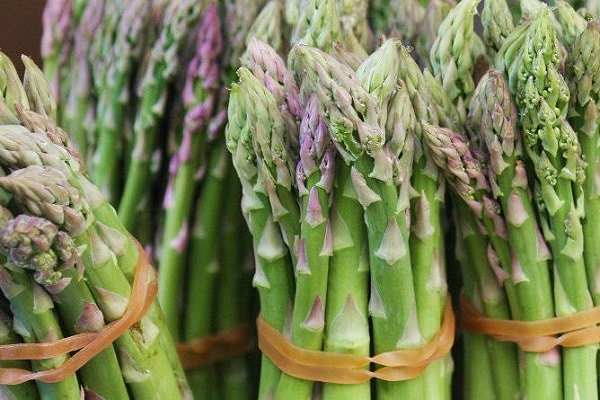
Yielding
This variety is distinguished by the formation of a large number of large shoots. The head has a dense structure, painted in a pinkish tint. The color of the pulp can be white or yellowish.
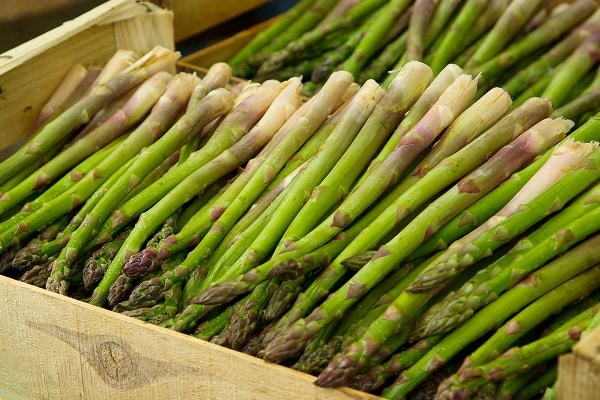
Tsarskaya
This variety is tall. It can reach 1.7 meters in length. The shoots are small in diameter, the flesh is tender, whitish.
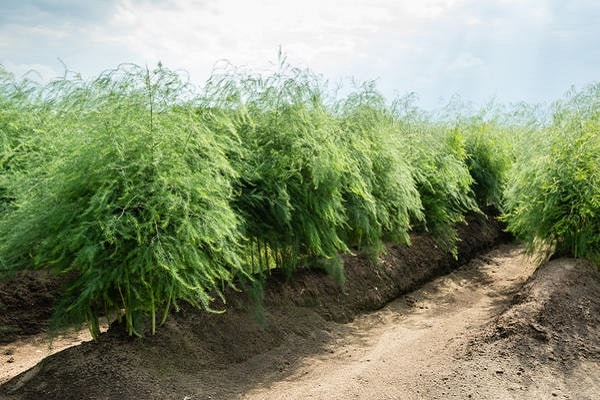
Dutch green
This variety has a high yield, its shoots are painted in a greenish tint. The product has a delicate taste without bitterness.
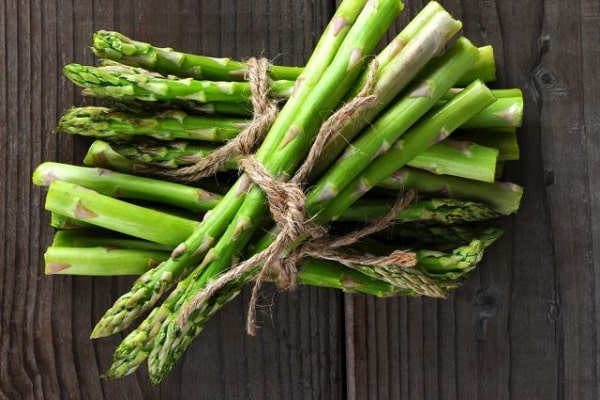
Growing regions
Asparagus is a plant that is grown almost everywhere.When growing it, you must take into account the characteristics of the variety. This approach will maximize the yield.
If cultivation is carried out in central Russia, it is necessary to give preference to the following varieties:
- Arzhentelsky.
- Gainlim.
- Harvest.
- Mary Washington.
You can also pay attention to the high-yielding variety Brock Imperial.
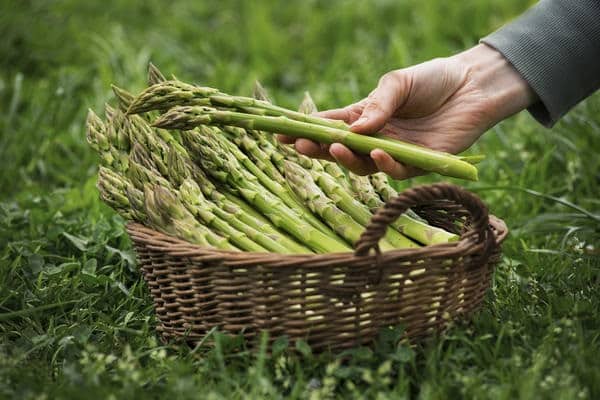
Growing from seeds
Asparagus seeds germinate slowly. To speed up this process, you need to know a few rules.
- In early April, the seed is soaked for 2 days in warm water. A small amount of a growth stimulant should be added to the liquid.
- Then the seeds are sown into a soil mixture from garden soil, sand, manure, peat. In this case, it is necessary to take into account the proportions of 2: 1: 1: 1.
- Then the seeds are sprinkled with 1 centimeter of soil. The soil is sometimes sprayed to keep it from drying out.
Seeds should be germinated at a temperature of 25 to 27 degrees Celsius. The material will begin to germinate only after 1.5 months. It is necessary to transplant the resulting seedlings into the ground from mid-June.

Reproduction by dividing the bush
The best breeding option for asparagus is to divide the bush. The bush should be divided so that each part of it has at least 1 shoot.
Division can be done in spring, autumn, summer. It is best to divide the bush during transplanting.
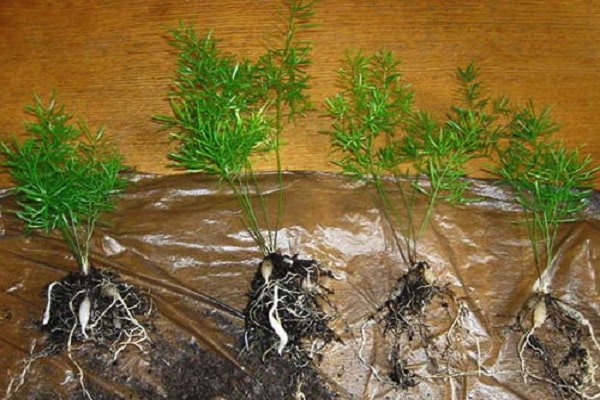
Propagation by cuttings
In the period from March to June, cuttings are cut from the shoots grown last year, which are planted in damp sand. This is necessary to start the processes of forming the root system. From above, the landing is covered with a plastic dome.
Landings are regularly ventilated and irrigated. Rooting takes 1 month on average.
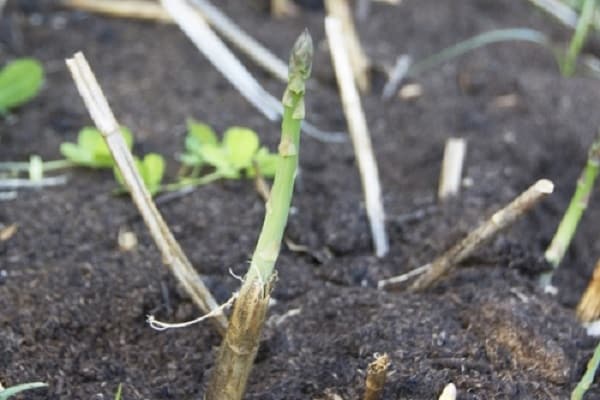
Forcing asparagus in winter
Asparagus can be grown not only in summer but also in winter. To do this, it is necessary to plant the plant in a greenhouse structure. In winter, the vegetable is grown by forcing shoots from the roots of 5-6-year-old crops.
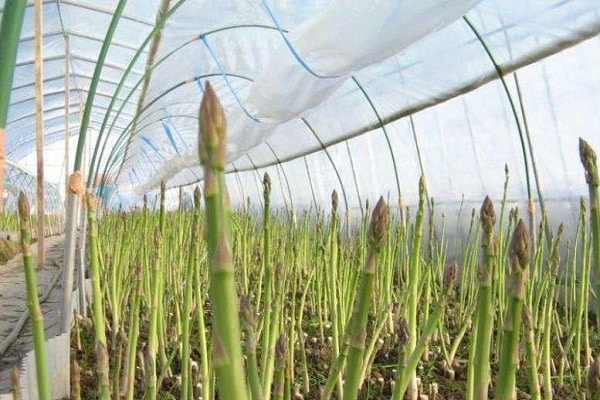
Landing
You need to plant an asparagus crop in a well-lit area where weeds do not grow. The soil should be sandy loam, since it is in such conditions that the plant gives the maximum yield.
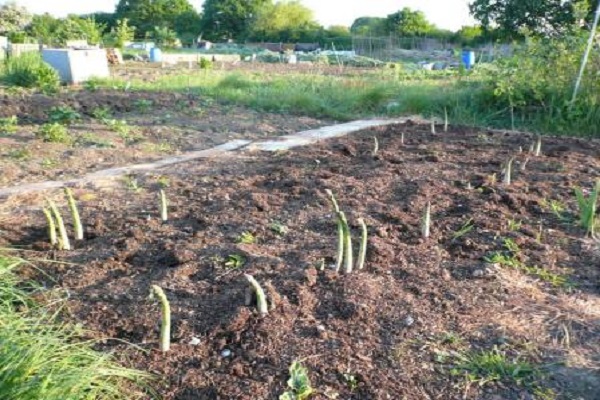
Spring landing
Asparagus is planted in early spring. In this case, planting must be carried out until the buds begin to actively grow. Before planting, humus is introduced into the ground at the rate of 10 kilograms of fertilizer per 1 square meter. Leave a gap of 0.6 meters between the rows. Plant no more than 4 plants on a 30-centimeter ridge. After planting, the plants are watered abundantly.
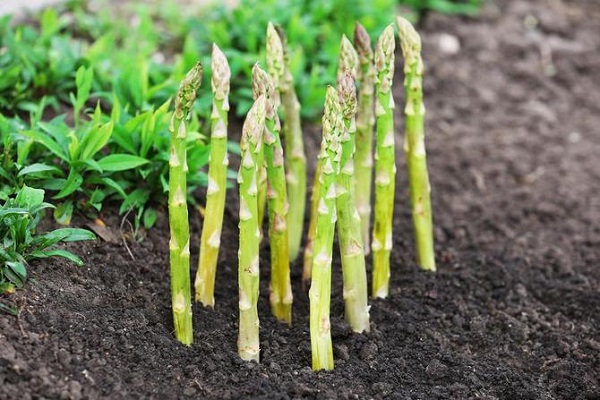
Autumn planting
Before planting in autumn, you need to prepare the soil. For this, the garden bed is dug up, fertilized. For 1 square meter of soil, you must add:
- 60 grams of superphosphate;
- 20 grams of ammonium sulfate;
- 30 grams of potassium sulfate.
When planting, the plant does not deepen, but a hillock forms above it, which will protect the planting from the cold.
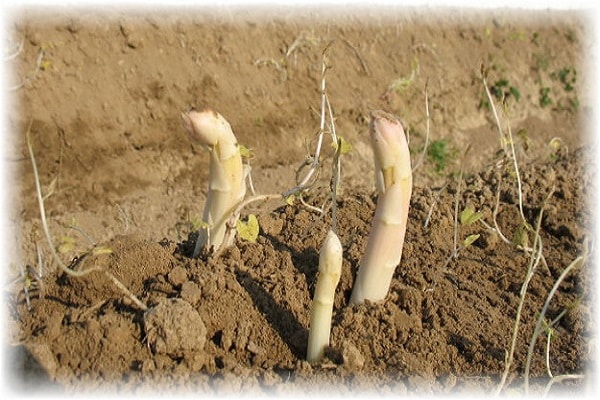
In open ground
In open ground conditions, the plant culture is planted according to the above instructions. At the same time, all recommendations for fertilizing the soil, the distance between plants and beds must be followed.
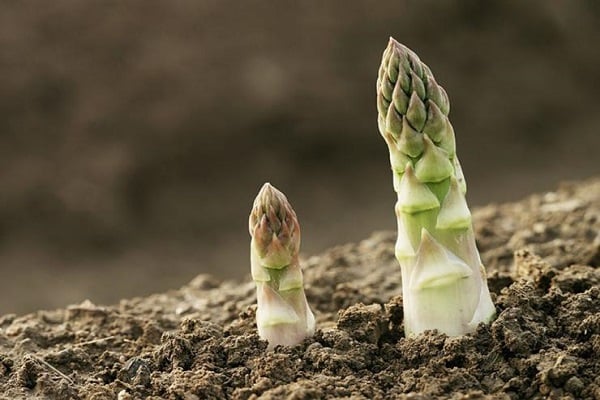
In the greenhouse
A greenhouse is used for growing asparagus in winter.
- In October, the roots are dug up, removed to the basement with a temperature of 0-2 degrees.
- In early December, the roots are planted in a greenhouse structure.
- Planting is carried out in small containers, 18–20 rhizomes need to be planted per 1 square meter.
- The planting is sprinkled with humus, the containers are covered with black film.
For 7 days, the temperature in the greenhouse is kept at 10 degrees, and then it gradually rises to 18.
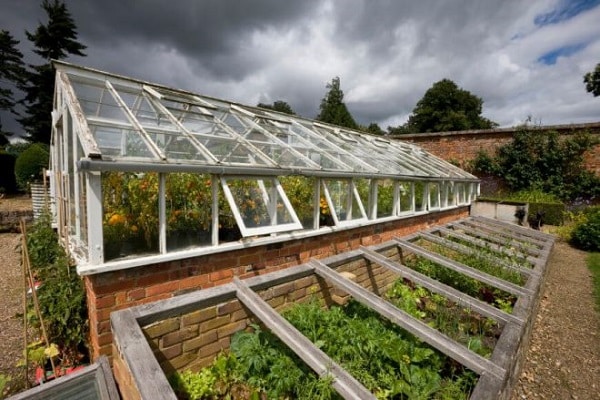
Care
To get a healthy plant, a rich harvest, you need to take good care of asparagus:
- you need to water the plant little by little, avoiding stagnant water;
- loosen the ground after each watering;
- a month after planting, the plant must be watered with a mullein diluted with water in a ratio of 1: 5;
- after harvesting, the crop must be fertilized with 30 grams of superphosphate, urea and potassium salt;
- after harvesting, it is necessary to level the ridges of the plant;
- in summer, asparagus should be fed with a 10% solution of poultry droppings;
- the last top dressing - in July, consists in applying a complex fertilizer.
In autumn, before frost, all stems are removed, the bottom of the plant is earthed up, covered with peat or compost. The height of such a shelter should be 5 centimeters.
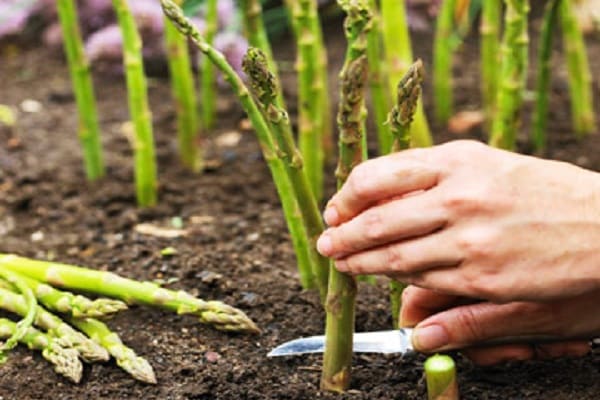
Diseases and pests
Asparagus is a rather disease-resistant plant. But it can be influenced by the following pathologies and pests:
- fungal diseases;
- leaf beetles;
- asparagus flies.
In order to prevent the death of the plant, the planting should be regularly inspected for the appearance of putrefactive spots, discoloration of the stems, damage to leaves and shoots.
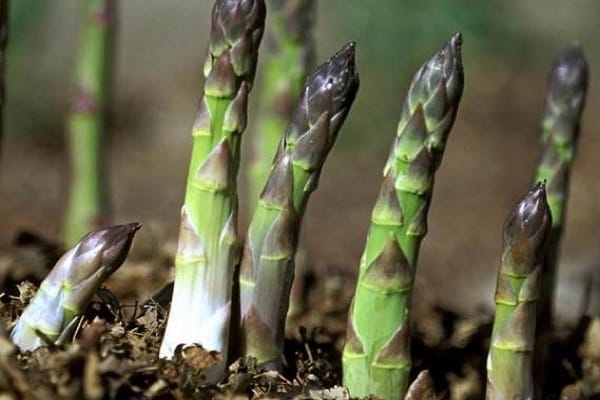
Healing properties
In addition to its pleasant taste, asparagus also has medicinal qualities. Interestingly, this plant has the potential to improve the health of both sexes.
For men
Asparagus is very beneficial for men.
- It helps to reduce hangover syndrome, protects liver cells from toxins.
- It has a beneficial effect in the treatment of prostatitis.
- Provides prevention of diseases and inflammations of the urinary system.

During pregnancy
Asparagus has a beneficial effect on the body of a pregnant woman. It protects it from vitamin deficiency, maintains the beauty and elasticity of the skin. It also contributes to the correct development of the fetus, its skeletal system, as well as saturation with essential trace elements and vitamins.
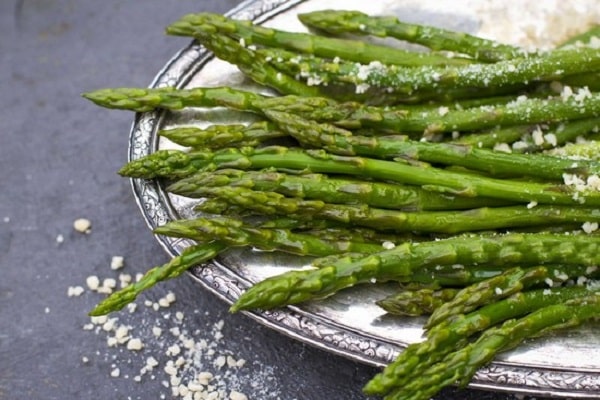
With diabetes mellitus
Asparagus lowers blood sugar levels, which is why it is recommended for people with diabetes. With regular use of this product in food, the process of insulin production is normalized.
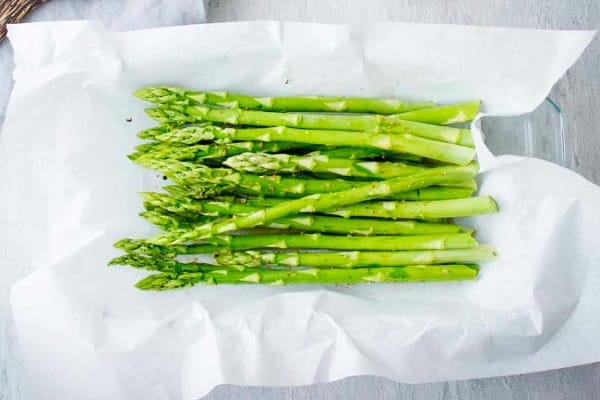
Contraindications
Asparagus has few contraindications. Among them, only the presence of gastrointestinal pathologies and individual intolerance to this product stands out.
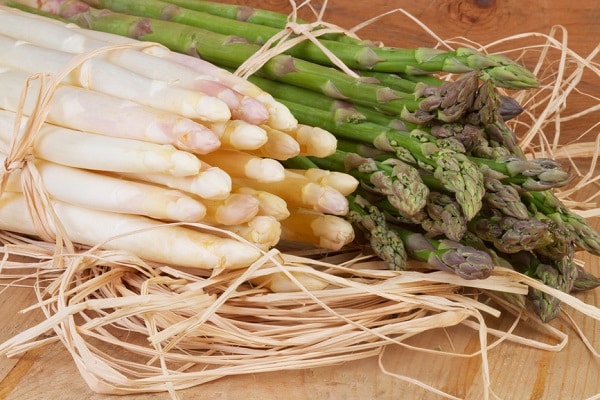
Collection
Asparagus can only be harvested 4 years after planting. Shoots are harvested at the moment when they begin to lift the soil crust. Most often, this process begins in May or April.
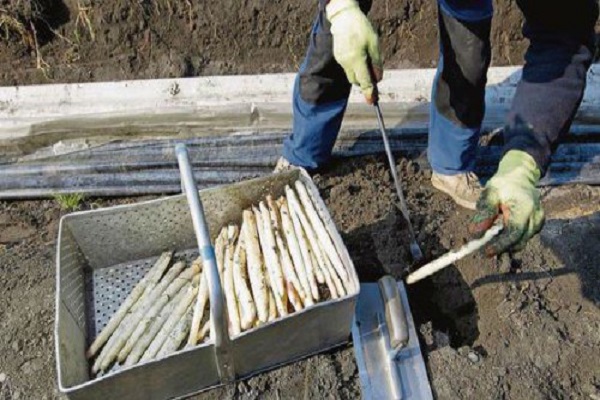
Storage
The harvested crop should be stored in a dark, cool place. The best option is the bottom shelf of the refrigerator, where it can keep its freshness for 3 months. You can also put a wooden box with the harvest in the cellar, where there is good ventilation.
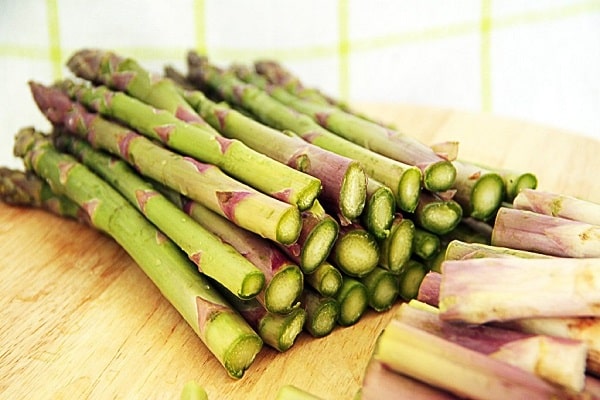
Freezing
It is best to eat fresh vegetables, but freezing is also allowed. In this case, the shoots must be spread out on a flat surface and placed in the freezer. When they are frozen, they should be removed and quickly placed in a plastic bag. The folded frozen crop is returned to the freezer. Such freezing allows you to get a product that does not stick together.
